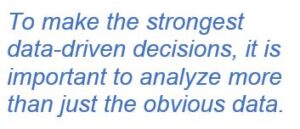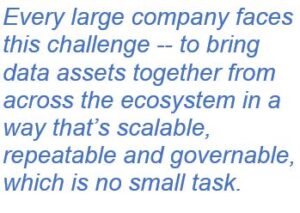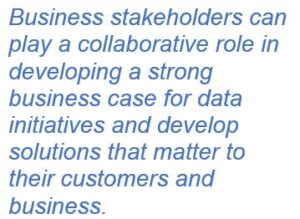Data quality and SAP S/4HANA migration (either through greenfield or brownfield implementation) seem to be distantly connected topics and hard to convince that they do depend on each other quite significantly. We don’t need to talk about the importance of the data in this blog, as that has already been discussed enough. With the increased digitization of processes, an abundance of data is generated in every organization. The questions are, how much of that data is useful to draw the insights for running the organization efficiently, and does an organization have processes to leverage the data to differentiate their market positioning? In this blog, let us examine why it is important to take a critical look at data quality before embarking on a large transformational journey such as S/4HANA or any other digital transformation that may be planned.
The power of digital transformation lies in how effectively an organization can run their processes, leverage the data to gain insights, and predict the outcomes and prepare for the future. As an organization begins to capture more data through its ERP systems, it will likely include fragmented data generated across lines of businesses, different devices, channels and geographies. How can fragmented data be connected in a way that characterizes an individual customer in an individual context — or reveals an unmet need in the marketplace or an internal opportunity for greater efficiency? In such situations, how can value be generated from the S/4 digital transformation other than driving business processes to run digitally? It is no understatement that many companies running on SAP ERP could not eun basic automated procurement planning functions such as MRP (Material Requirement Planning) due to unreliable data quality in their SAP system. If that is the case, the S/4 move is not going to improve the MRP.
 What is the best course of the action? How do we break the norm and look for ways to transform the organization by making data-driven decisions? Despite its challenges, data represents a unique opportunity on the path of an organization’s digital future. Unlocking the full value of all data resources can be complex and expensive, particularly in large, established enterprises with hundreds of legacy systems, duplicate data stored around the globe and inconsistent naming practices. One must recognize the critical importance of data in the company’s digital future, and we recommend setting up a distinct data organization that works in tandem with IT to drive digital transformation and engage the business.
What is the best course of the action? How do we break the norm and look for ways to transform the organization by making data-driven decisions? Despite its challenges, data represents a unique opportunity on the path of an organization’s digital future. Unlocking the full value of all data resources can be complex and expensive, particularly in large, established enterprises with hundreds of legacy systems, duplicate data stored around the globe and inconsistent naming practices. One must recognize the critical importance of data in the company’s digital future, and we recommend setting up a distinct data organization that works in tandem with IT to drive digital transformation and engage the business.
Companies beginning to build their data’s future-ready foundation will likely face multiple challenges. It is critical to recognize that, to make the strongest data-driven decisions, more than just the obvious data will need to be analyzed. The data that is not easily available in enterprise systems but is hidden in the spreadsheets. The nonobvious data — information that no one knows exists – will be needed. Then, even if all known and unknown enterprise data can be collected, how can these disparate, inconsistently formatted and improperly named data points be brought together in a meaningful way? The work of discovering and connecting enterprise data can be formidable and costly.
Three Layers of a Data Ecosystem
 Business stakeholders have a very complex task when they pursue the transformation in their organization. The process redesign is the core of the transformation; however, the success of the process redesign is highly dependent on the quality of the data. Taking an ecosystem approach to data is critical to an organization’s overall success. The ecosystem approach to an S/4HANA move should focus on these three core layers of the data to transform into a data-driven organization:
Business stakeholders have a very complex task when they pursue the transformation in their organization. The process redesign is the core of the transformation; however, the success of the process redesign is highly dependent on the quality of the data. Taking an ecosystem approach to data is critical to an organization’s overall success. The ecosystem approach to an S/4HANA move should focus on these three core layers of the data to transform into a data-driven organization:
- Data layer. An array of data management and digital capabilities that make data assets, many from legacy applications, consumable in near-real-time to a variety of complex use cases.
- Solution design layer. Provides tools to systematically integrate decisions and insights into processes and applications, helping meet the organization’s digital strategy goals.
- Analytics and development layer. A collection of AI/ML and advanced analytics technologies that bring data assets to life and glean insights from structured and unstructured data to support better decisions and more efficient workflows.
 Once these three layers are coordinated, it is necessary to manage the data solutions, refresh cycles, enrich and monitor to ensure strong and consistent governance. As such, robust data governance is critical in protecting sensitive data, and determining clean data is critical to accomplish those digital strategy goals.
Once these three layers are coordinated, it is necessary to manage the data solutions, refresh cycles, enrich and monitor to ensure strong and consistent governance. As such, robust data governance is critical in protecting sensitive data, and determining clean data is critical to accomplish those digital strategy goals.
We suggest primarily focusing on the data layer before embarking on the S/4 transformation journey, identifying use cases that must be embedded into the solution delivery layer and then finally, developing strong monitoring through advanced analytics. The key component of the data layer is understanding the use cases by each line of business or function. For example, the supply chain team’s goal is to increase their order fulfillment rate, while the finance organization’s goal is to reduce the variance by controlling unplanned expenditures. Both goals seem to be very process-centric, but a lot of planning and preparation is required ahead of solution design and delivery to meet those organizational goals. Order fulfillment requires seamless integration and coordination of high-quality data across marketing, sales, production and procurement functions. The quality of the data does not change overnight during the solution design phase and it requires a persistent, long-term view of the data assets, understanding the dependencies, defining a strong data dictionary, ownership, and continuous monitoring.
Our approach to data is unique. It is not driven by business processes but is based on the outcomes and experiences the organization wants to deliver to its business partners and stakeholders. For example, if the goal is to ship every order in full and on time, the business process design should support the outcome and ensure that data is available and supportive of the solution design. If the data is not ready to support the outcome, the solution design will end up providing results that would not be optimal for digital transformation. During the Data Readiness Assessment, we review the client’s organizational digital strategy goals and work backward, identifying data assets across the organizational landscape and preparing those data assets for the upcoming transformation. Identification, assessment, cleansing and enrichment of those data assets is a time-consuming task and has the potential to derail the solution design if not addressed collaboratively. Final words – moving forward with an S/4HANA digital transformation journey is a big decision. To be successful, it is very important to focus on the data to prepare and truly transform into a digital enterprise.
Protiviti’s Data Readiness Assessment focuses on the digital strategy and objectives and aligns data needs to accomplish those goals. In our experience, organizations that have not invested sufficient time and resources to define their digital transformation strategy, goals and associated data preparation activities will have compromised results, leading to frustration and inability to meet c-suite expectations. Whether aspiring to become more efficient through automation, creating new services for customers or making better decisions by using analytics and other digital technologies to work with data in real-time, maintaining data quality and data assets across the full organizational landscape will help ensure success.
To learn more about our SAP capabilities, contact us or visit Protiviti’s SAP consulting services.



